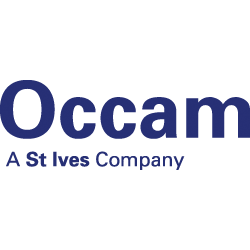Top tips on transforming data driven communications
17 Dec 2015

Even when you have achieved what you set out for, you are in constant change.
When considering transforming your data driven marketing the first question is, why do we need to change? Is this a reaction to consumer demand or your competitors? Being left behind or enhancing the brand? It is really important that the business is clear before embarking on the journey? Even if it is a combination.
If you know why, then how are you expecting customers to change their behaviour and what are the indicators that you are going to measure that show this is happening? Increased engagement, retention, loyalty? How do you measure this currently? Is it robust?
If your customer behaviour changes, then what are the business benefits? What is the business case? How can you quantify this?... retention increase by x%, increase spend per consumer means x? It is important to place some hard figures on what impact it will have, as well as some caveats.
At Occam we talk about the building blocks that help you achieve data driven marketing as follows:
Data – relevant and high quality customer data that builds a complete picture of your customer interactions and transactions.
Understanding – insight on your customers that informs you about their behaviour/patterns.
Decisioning – the strategy for targeting communications, timings and messaging to drive relevancy.
Execution – delivering a consistent personalised message across your channels so that it is effective.
These building blocks can help you shape your planning and prioritisation. Without good data it is hard to deliver insight, without insight you can’t make good decisions and without good decisions it is hard to execute communications effectively.
Below are some of our tips about what you should consider/evaluate before you embark on your journey.
Evaluate skills and capabilities - identify the relevant skill sets that can help you deliver this. Look internally first, you may need some upskilling or a change of roles to facilitate this so make sure that you understand the existing skills you have.
Identify any future resource requirements - if you have done 1, you may have realised that you don’t have all the skillsets in place that you need, so be clear about what gaps you need to fill, the scale and when you would need this external resource.
Identify key stakeholders– your colleagues and agency partners are an essential part of the change you are delivering and so make sure that they are ‘on board’. Keep Senior Management updated and identify key people from other parts of the business that it will impact.
Define the impact - be clear about what you want it to deliver, there may be more than one so build them all out, prioritise and make sure you can measure them.
Identify the critical success factors – this could be data platforms, technology, resources, creative, timings etc. There will be some factors that will cross over between each, but that is a good thing as it will help you identify the ‘critical’ critical success factors!
Create a common language - you may have to educate the business so they understand what you are doing and what it means. ‘Personalisaton’ could mean different things to different people so make sure you publicise your definition.
Clarify your future proposition - make sure you deliver a single minded proposition about what you want to achieve. This should be a clear unambiguous statement about the customer experience. Then ask yourself why and what will we do with this experience?
Start small and build out sophistication - don’t try and do everything all at once, review your ‘critical’ critical factors and identify your priorities and pick off the ones where you can test and learn. Build in contingencies and do not over sell the expectations.
Create a roadmap with key dependencies/risks - your journey, as it will be a journey, needs to have a roadmap. Make sure that this is communicated and discussed with stakeholders so they are aligned on what, when and why.
Build some urgency - chances are you already have a deadline that you are working to, but build some urgency about why it is important. Be careful to build this urgency when you have some quick wins already mapped out so you can maintain momentum.
Change is a good thing, it brings innovation and drives businesses forward. If you do not have a plan for transforming your data driven marketing, then chances are you competitors will be stealing the ground from you.
Change does take time, so make sure that you are driving forward that change within your business. There has never been a better time to start to transform this - your data obligations are changing, CEO’s are finally waking up to Data Strategy and technology has advanced so that it is cost effective to help you achieve your CRM ambitions. So what are you waiting for?
Come and meet us at our event to find out more about how to achieve this.
By Guy Milsom, Business Development Manager, Occam – a St Ives Group company

Please login to comment.
Comments